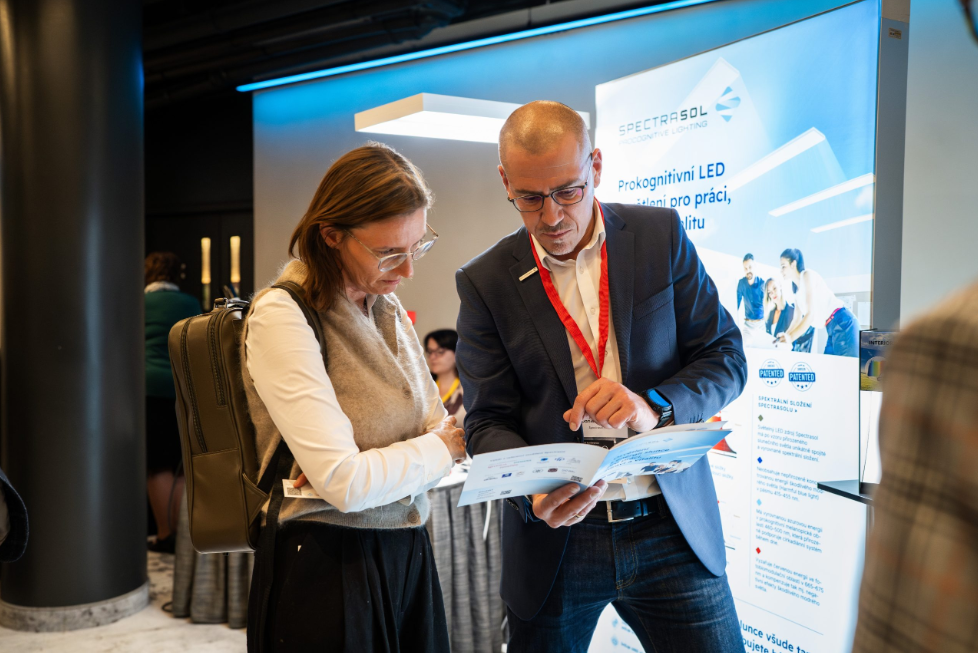The mission of Spectrasol is to promote the idea of health-beneficial electric light. However, this does not mean that we neglect theoretical preparation. That is why we went to expand our knowledge at the SVĚTLO 2025 conference. At the fourth annual conference, which took place on November 12, 2025, at the OREA Hotel Pyramida in Prague, the dominant topics were space and sustainability.
Light in Architecture: Necessity vs. Innovation
One of the central topics of the conference was the shift in perception of light in architecture. Architects still tend to focus more on the question of how to bring natural light into buildings (which we of course welcome), while artificial light is addressed less, or only from the perspective of visual and aesthetic functions. But here too, a positive shift can be observed: whereas in the past interior lighting was considered primarily a technical and practical necessity, today its biological functions are increasingly discussed. Several contributions emphasized the need to focus more on light itself, not just the aesthetics of fixtures.
Light in Interiors, or It’s Not Easy for Us
The participants reflected on the negative development in regulation, which in practice may mean reduced access to daylight in new buildings. Natural light is irreplaceable and cannot be fully substituted with artificial lighting alone. Therefore, their mutual connection and proper combination are key. And of course, its quality: the less light there is in newly built residential and office buildings, the more architects, builders, and users should consider installing artificial lighting that closely resembles natural light.
Ing. Viktor Zwiener, Ph.D. (Dekprojekt s.r.o.) pointed out the ongoing amendment to the decree, which newly stipulates that in offices, healthcare facilities, senior homes, and other similar interiors, the supply of daylight is defined solely by the size of the windows (windows must now have an area corresponding to one-tenth of the room size). Such a relaxed definition further disadvantages building occupants and is currently a strongly criticized topic not only in professional circles. This development significantly contributes to the discussion around the quality of artificial lighting in interiors and supports the relevance of full-spectrum light.
As Ing. Arch. Marek Tichý, architect and lecturer at the Faculty of Architecture, CTU in Prague, stated: Light from windows or skylights is beginning to become a “scarce commodity.” In this context, one of the key opportunities is full-spectrum lighting, which mimics the properties of daylight, supports a healthy circadian rhythm, and contributes to better mental and physical health.
Art
The conference also included a discussion about the artistic and aesthetic role of light, which went beyond purely technical aspects. Among other things, it was mentioned that conventional LED lighting can sometimes feel cold or unpleasant in certain spaces, discouraging people from staying there. Properly designed lighting should therefore not only fulfill a functional purpose but also create an atmosphere in which a person feels natural and comfortable, ideally in harmony with natural light in nature.
We can only agree with this. It is great that more and more professionals are considering the quality of lighting and taking into account the biological needs of users.
Finally, we reveal that in the next edition, the conference Light should strongly highlight the topic of artificial light sources with the potential to replace natural sunlight for people spending most of their time indoors.
Team Spectrasol
And what did the conference look like from Spectrasol’s perspective? See here:
Translated using AI


